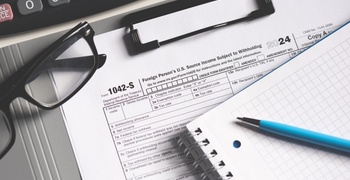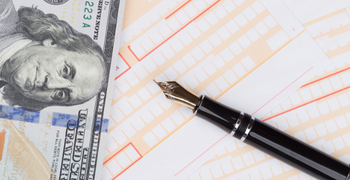Sensors are changing the world — and likely your taxes
In 1996, the blockbuster movie Twister conjured up a desperate race to launch hundreds of tiny spheres from the back of a pickup truck into an immense tornado. The spheres contained rudimentary anemometers to measure wind speed as well as pressure and humidity sensors and devices to record data. Less than 25 years later, the entire scenario seems incredibly quaint.
Today, we have the internet of things (IoT) connecting sensors of all shapes and sizes. We have sensors 50 times thinner than a human hair. We have smart dust. We even have sensor swarms. Capable of activities like real-time communications and self-learning, these sensors are increasingly found everywhere, including on pickup trucks. They can also be launched into a tornado using remote-controlled drones.
Clearly, a lot has changed. But one thing hasn’t: As companies roll out IoT applications, they need to consider the tax implications.
The relationship between IoT and 5G
Today’s IoT sensors can be attached to just about anything: refrigerators, jewelry, vehicles, airplane engines, farm equipment, manufacturing production lines — even cows. They’re powering massive transformations across industries, including smart buildings and cities, remote and robotic surgery, autonomous cars, drone-based shipment delivery, immersive sports experiences, and much more. But, we’re just getting started.
5G is the next generation of mobile wireless technology and promises higher speeds, lower latency, and greater reliability. These capabilities will impact nearly every industry, especially IoT because 5G will facilitate faster collection of more sensor data to enable or improve all of the above applications. It’s expected that in 2020, 300 billion sensors will be “making lifestyle enhancements in our daily lives.” GSMA forecasts that the United States “will reach 100 million 5G connections by early 2023, nearly doubling to 190 million by 2025.”
IoT and communications tax
Since IoT sensors transmit data, they’re often subject to communications tax rather than sales and use tax. This means many businesses that have never faced the daunting complexity of communications tax may have to do so if they want to avoid costly tax surprises. Getting it wrong could mean not only taking a devastating financial hit from audit penalties and fines, but also having to suddenly raise prices for customers who are likely to get angry.
To fully understand where you might fall within these complicated tax rules, it’s critical to first be able to answer three fundamental questions:
- How does your IoT service achieve connectivity? It’s more likely to be communications taxable if the connectivity is embedded on the device rather than by using an existing, browsable connection. (Learn more.)
- Are there any other services that are bundled with your offering? Those services could have a material impact on taxability, varying widely by individual jurisdiction rules. (Learn more.)
- Who in the supply chain is responsible for collecting and remitting the tax? This can change depending on how the final product is packaged and sold to the end user.
It’s important to remember that there’s always the potential for change in the current tax and regulatory environment. An organization must not only figure out the current tax implications when it rolls out new sensor-based data services but also continue to track evolving rules in every jurisdiction.
Getting a handle on IoT-related communications tax
If you’re rolling out a new IoT product and think you might have a communications tax liability in even one jurisdiction, here are the initial steps you need to take:
First, ensure you have a team in place that understands communications tax. Hire a communications tax expert — sales and use tax proficiency is not enough — or contract with a third-party tax expert or service provider so you can accurately determine your communications tax liability.
Next, ensure your tax, billing, and other financial systems can handle communications tax. Your systems must be able to share information effectively and enable you to generate and present customers with a single bill with comprehensive taxes, fees, and surcharges — in a layout and language that meets FCC and state requirements. This data should also be readily available for easy form preparation, filing, and remittance.
Finally, ensure your marketing department is in lockstep with the tax team. The marketing department must understand how they can potentially impact tax treatment. A seemingly minor descriptive word can deem the product communications taxable, regardless of actual functionality. For example, “a drone with sensors that transmit data in real-time without Wi-Fi” would trigger communications tax since it implies that connectivity could be embedded. Eliminating the last two words would make it ambiguous.
The bottom line
Fueled by the launch of 5G, IoT utilizing trillions of sensors is fast becoming the world we live in, at a substantially faster clip than the development of tax and regulatory body guidance. Whether you’re a communications tax veteran or new to the space, understanding the nuances of your product and the current tax applicability are critical to success. Keeping an eye toward future tax and regulatory changes is also a must. Learn more about how Avalara for Communications can help.

The Avalara Tax Changes midyear update is here
Trusted by professionals, this valuable resource simplifies complex topics with clarity and insight.
Stay up to date
Sign up for our free newsletter and stay up to date with the latest tax news.














